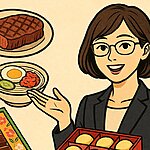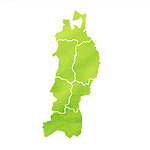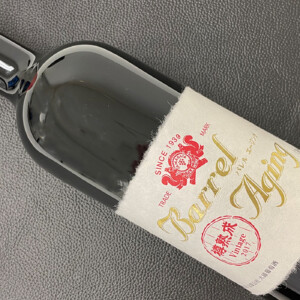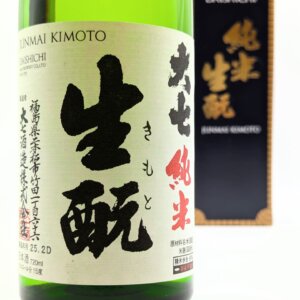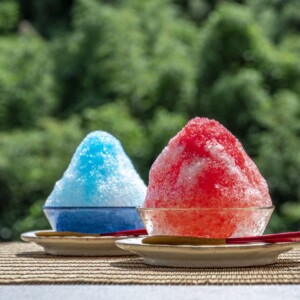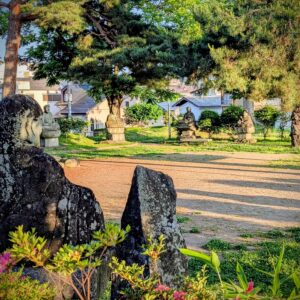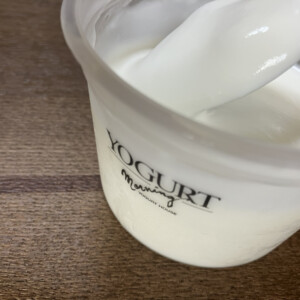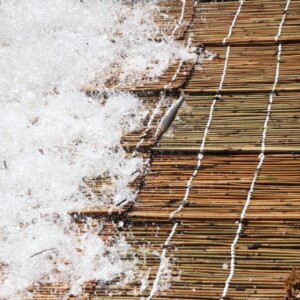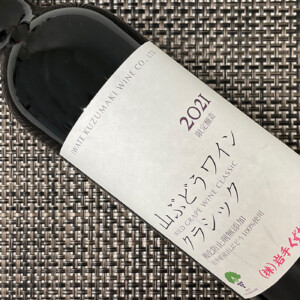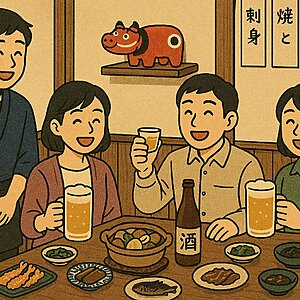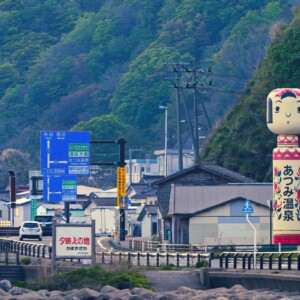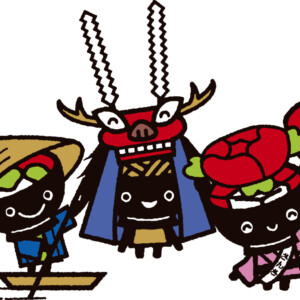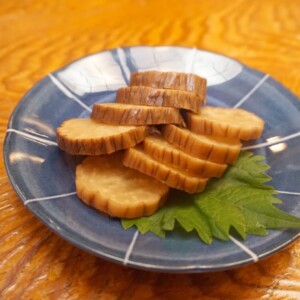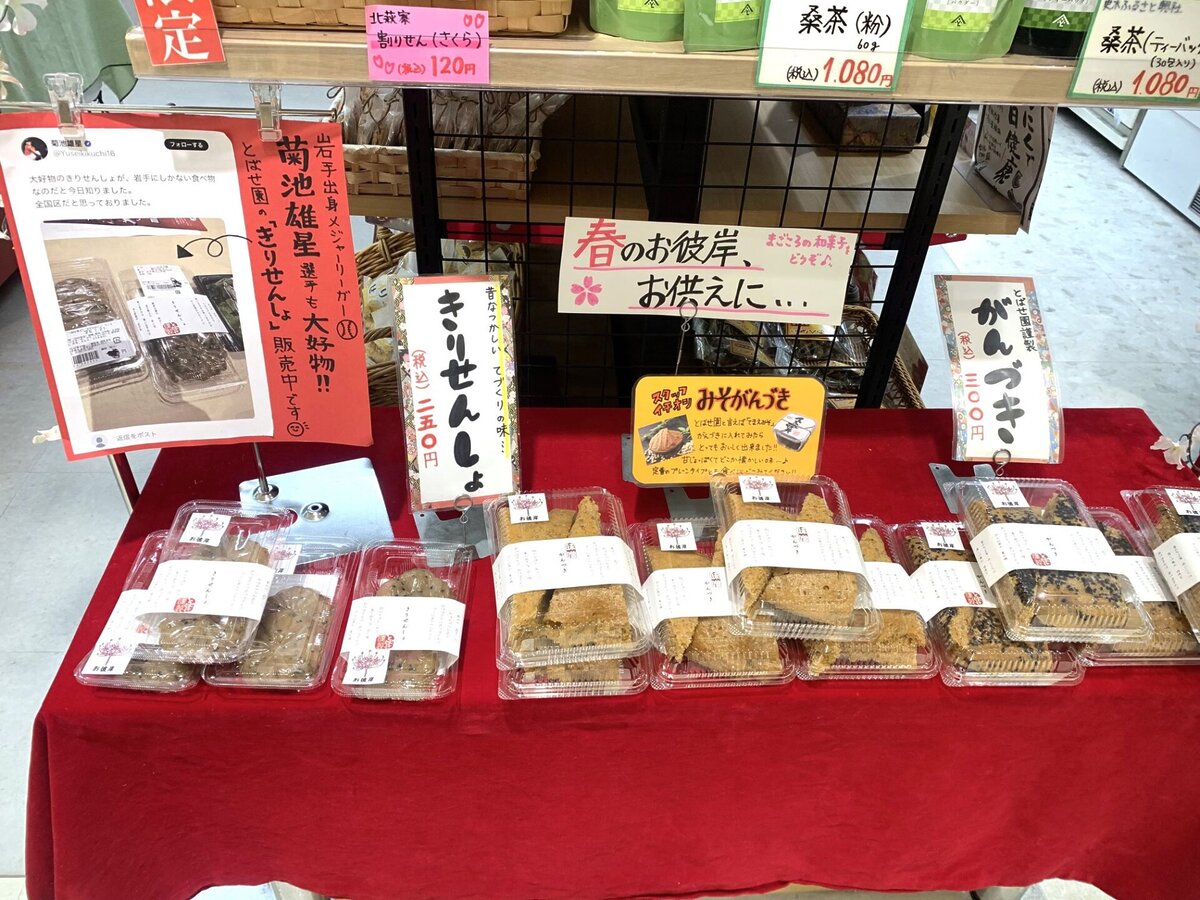
What was "Kirisensho" that pitcher Kikuchi Yusei thought would be in the national category? [Iwate Prefecture]
table of contents
- 1 What kind of sweet is "Kirisensho"?
- 2 What is the origin of the name "Kirisensho"?
- 3 Even within the same Iwate prefecture, "Kirisensho" differs depending on the region
- 4 What is the difference between "kirisensho" and "yubeshi"?
- 5 How to make "Kirisensho"
- 6 Here's the "Kirisensho," pitcher Kikuchi Yusei's favorite!
- 7 summary
"Kirisensho" is a local sweet made from steamed rice flour, and is served at celebrations in the central part of Iwate Prefecture, or as a snack when planting rice or farming.
The other day, major leaguer Kikuchi Yusei, born in Morioka, introduced him on his X account, saying that he thought it was a national sweet.
Today I learned that my favorite food, Kirisensho, is a food that only comes to Iwate.
— Kikuchi Yusei (@Yuseikikuchi16) January 22, 2025
I thought it was a national region. pic.twitter.com/vwzmJnMQ0K
In this article, we will introduce Kirisensho, a local sweet that has been loved in Iwate.
What kind of sweet is "Kirisensho"?

It has been eaten as an event food for a long time, mainly in the paddy fields in the inland Iwate Prefecture, and the way it is made and taste has been carefully handed down by farmers and households.
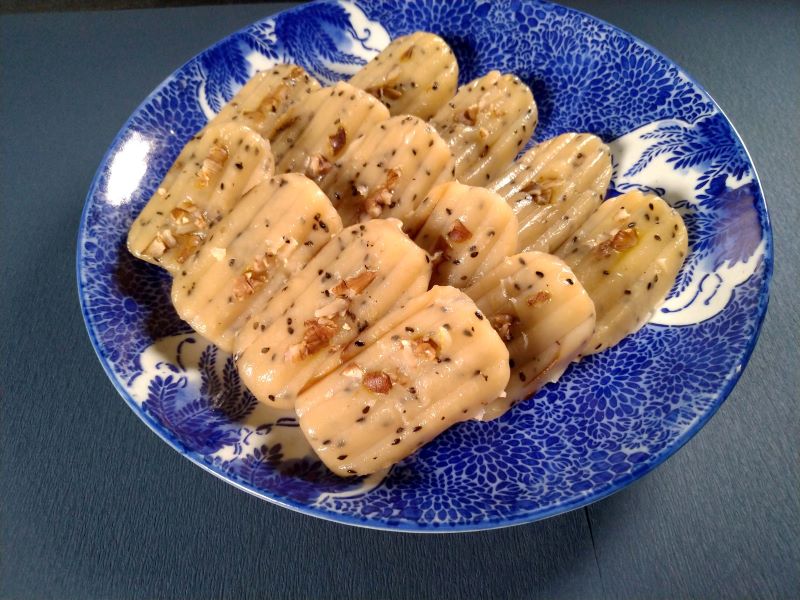
The recipes differ from region to region, each household, and each family have a unique and lacks standard, with the main ingredients being moist rice flour, and the seasonings are sugar (such as granite), soy sauce, walnuts and black sesame seeds.

These are simple, ordinary sweets that are not in style, which can be called the mainstream, such as those with bean paste, those with black syrup, and those with buns, those with "Yubeshi" similar to "Kurumi Yubeshi" in Kanto and Tohoku, and in some regions where they are eaten with sweet and salty paste made with soy sauce and sugar.
What is the origin of the name "Kirisensho"?

Kirizansho, which is made by steaming rice flour and sugar and sansho, and is still sold as a lucky charm at Torinoichi, which is held every November at Washi Shrine in Asakusa.
In the past, in Iwate, "kirisensho" was made by kneading rice flour using chopped sansho pepper and soaking it, so it was called "kirisansho", but the most likely theory is that this was corrupted into "kirisensho".
It is said that sansho was no longer used in the early Showa era and its current flavor has become, but there are still shops in Morioka City that sell "kirisensho" under the name "kirisansho".
Even within the same Iwate prefecture, "Kirisensho" differs depending on the region
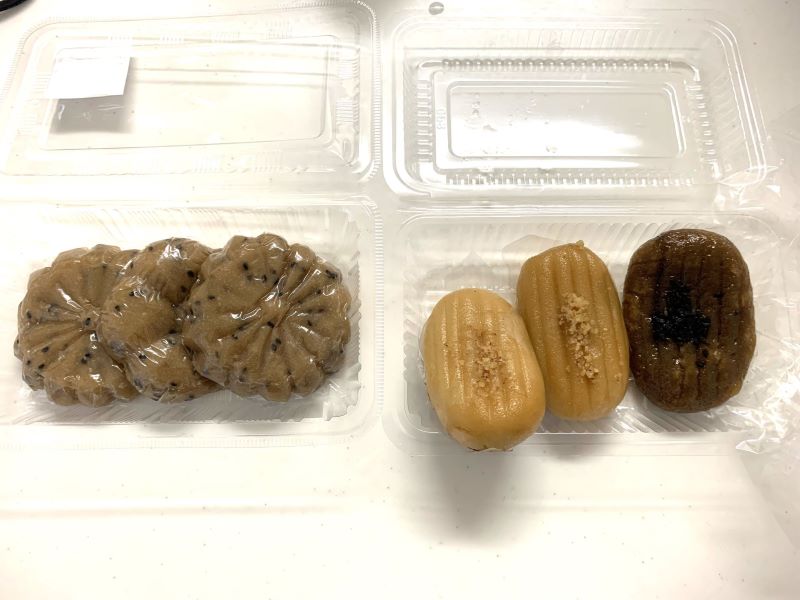
The shapes of "Kirisensho" come in a variety of variations, including those that look like a bakowa-shaped with a patterned chopstick, those that are oval or leaf-shaped, and those that are also made from patterns to shape flowers or boats.
"Kirisensho" is a flower-shaped flower-shaped one that is common in the Kitakami area
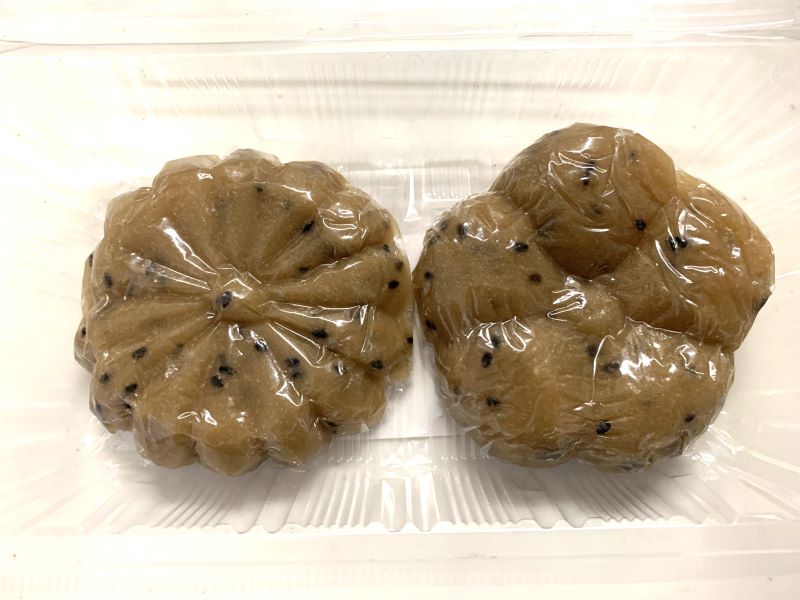
This type of thing pitcher Kikuchi introduced in X, resembling chrysanthemum flowers or plum blossoms, is thin and has nothing inside.
Around Hanamaki there is a mixture of oval and manju-shaped "kirisensho"
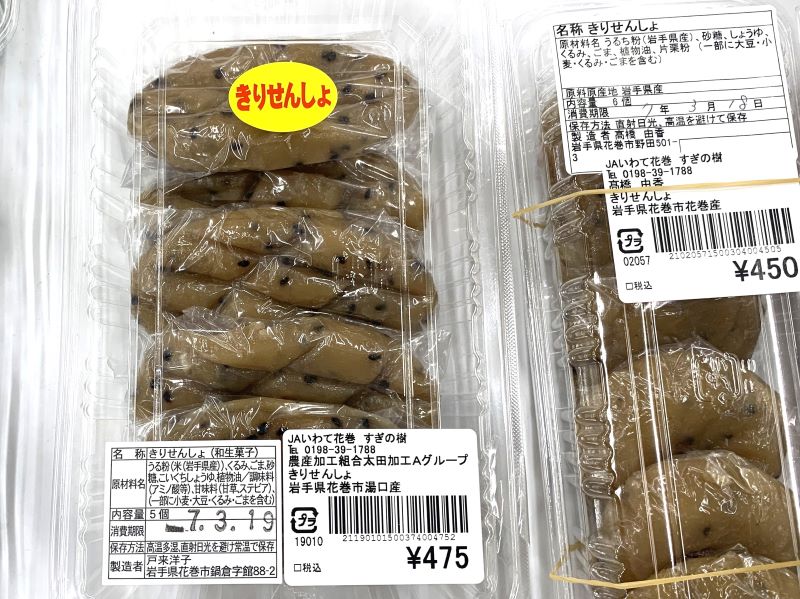
Many of them have a thin oval shape and are decorated with lattice-like patterns with chopsticks, and in some areas, they are shaped like manju and contain bean paste inside.
In Hanamaki, there is also an area where Hinamatsuri is decorated with Hina dolls called " Hanamaki Dolls " and offering "Kirisensho" offerings.
Most common in the Morioka area is "Kirisensho" with oval shapes and honey.
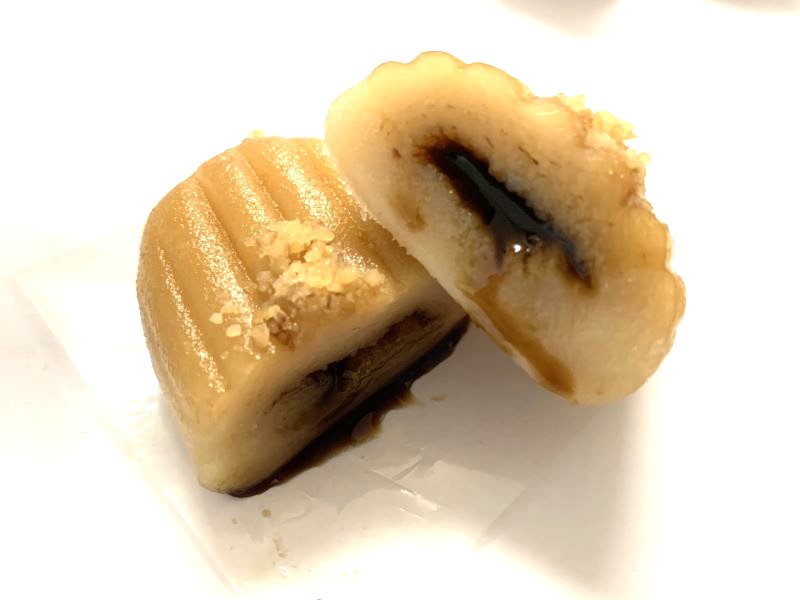
There are some slightly thick "chikuwabu" stick-shaped sticks, oval oval-shaped ones, and some have sweet nectar inside, making there very little clear differences between them and "Yubes."
In Morioka City, there are many mochi sweets shops that make "kirisensho" filled with honey, but it is said that in ordinary households there are many "kirisensho" that do not contain honey.
What is the difference between "kirisensho" and "yubeshi"?
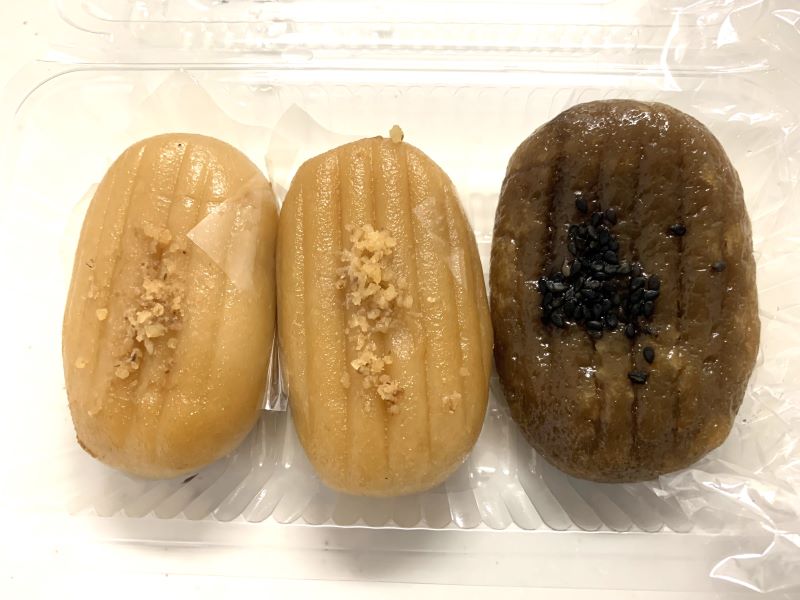
Both are sweets made by kneading glutinous rice flour or glutinous rice flour and steaming, and have a chewy texture and sweet and spicy taste caused by sugar and soy sauce, and do not have any distinctive characteristics.
It is said that the difference between these two is that "Yubeshi is not honey, and Kirisensho is not honey," but in Morioka, there are also many "Yubeshi" made with black honey, and the boundaries of these are very vague.
How to make "Kirisensho"

The ingredients are water, rice flour (where glutinous rice flour is added, and glutinous rice flour is added), sugar (tri-warm sugar, brown sugar, and grain), soy sauce, salad oil, walnuts, and black sesame seeds.
The amount of ingredients, kneading method, steaming time, etc. vary depending on the shop and home, but the method of making them is almost the same as in the following steps.
- Put water, sugar, soy sauce and salad oil in a pot and bring to a boil while stirring.
- Put rice flour in a pot, stir quickly with a wooden spoon, turn off the heat and knead it.
- When the white powder is no longer visible, mix walnuts and black sesame seeds and knead more.
- Tart it to the size of one piece, shape it, and steam it in a steamer.
Although they are made in roughly this area, the order in which the ingredients are added is different, and some areas require steaming and kneading, and the texture and taste vary not only depending on the creator, but also the production.
Here's the "Kirisensho," pitcher Kikuchi Yusei's favorite!
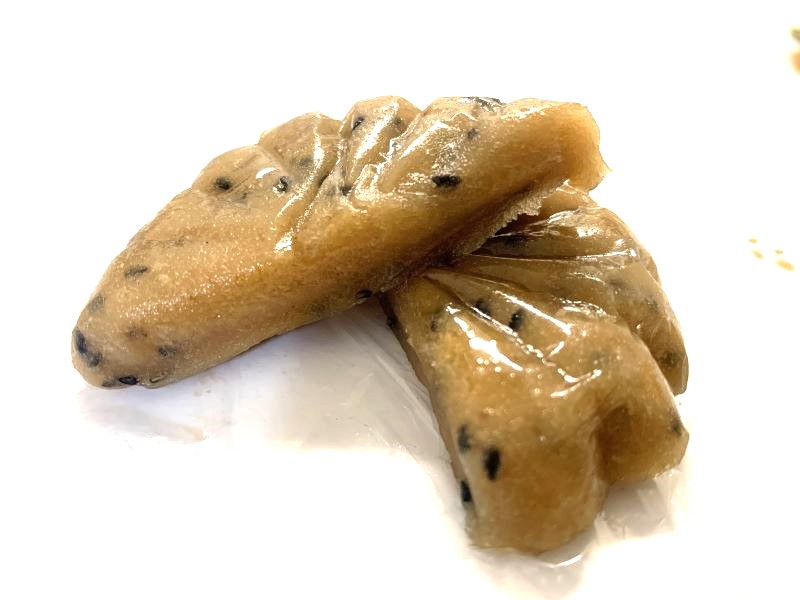
The Kirisensho introduced by pitcher Kikuchi on X is built at Tobaseen

Kirisensho has a beautiful flower shape, and is popular for its chewy texture and gentle sweetness of the tan-warm sugar.
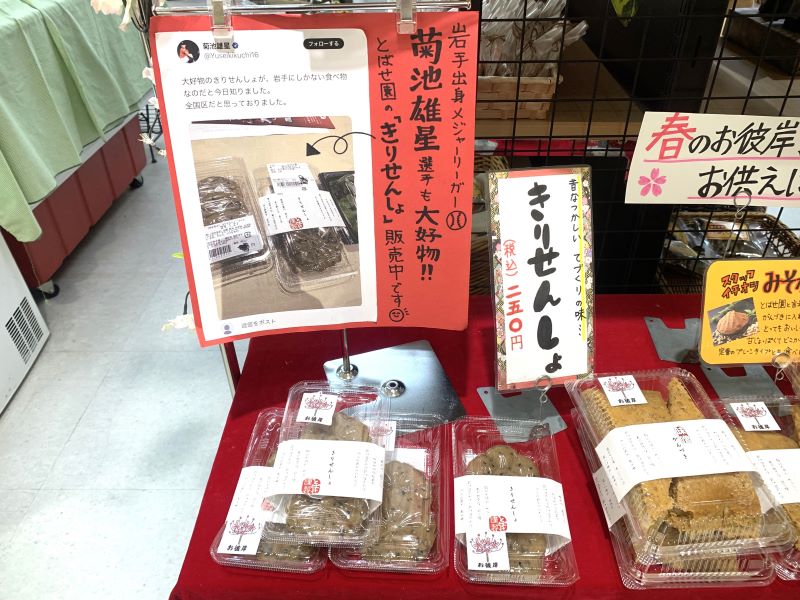
Sweets made at Tobaseen can be purchased at stores in Kitakami City and surrounding areas, such as Heartful Shop Magokoro, located at Ezuriko Shopping Center PAL
Tobase Garden <Information>
- Facility name: Tobaseen
- Location: 214-5 Akikozawa, Futakocho, Kitakami City, Iwate Prefecture
- Phone number: 0197-66-5050
- URL: Tobaseen Official Website
Google Map
Heartful Shop Magokoro <Information>
- Facility name: Heartful Shop Magokoro
- Address: 1st floor, 19-68 Kitakiyanagi, Kitakami City, Iwate Prefecture, inside Etsuriko Shopping Center, PAL
- Phone number: 0197-65-2561
- Business hours: 10:00-20:00
- No regular holiday
- URL: Etsuriko Shopping Center PAL Official Website
Google Map
summary
As we have introduced so far, "Kirisensho" is a handmade sweet that has not been introduced as "this is the standard," and has been conveyed to the individual homes in each community and in their own homes.
In Tohoku, simple sweets such as "Yubesi" and "Ganzuki" that are similar to "Kirisensho", so why not try comparing them at different places you stop by when you travel?


![[Iwate Prefecture] Soft-serve ice cream with sake, miso and wasabi flavor! Why are the soft serve ice cream eaten at roadside stations so delicious? There's also school lunches! Iwate Prefecture Catch](https://jp.neft.asia/wp-content/uploads/2025/06/915fd0ce722ab0f21e74864401170847-150x150.jpg)
![New spots in Iwate Prefecture are packed with great people, baseball, and famous restaurants! I went to three new road stations! Local report [Iwate Prefecture] Iwate Road Station Catch](https://jp.neft.asia/wp-content/uploads/2025/04/9a64af524236eca1ecd5db74710af09c-150x150.jpg)
![The specialty of Genbikei, "Flying Dango," is definitely worth a visit! Delicious activities! [Ichinoseki City, Iwate Prefecture] Genbikei bus stop](https://jp.neft.asia/wp-content/uploads/2017/04/IMG_5931-150x150.jpg)
![Bottle Don is the definitive Sanriku souvenir that looks delicious! [Iwate Prefecture] Bottle don (abalone, scallop, salmon roe)](https://jp.neft.asia/wp-content/uploads/2023/06/IMG_5048-150x150.jpg)
![Ryusen-no-no-no-no-no-no-no-no-no-no-no-no-no-no-no-no-no-no-no-no-no-no-no-no-no-no-no-no-no-no-no-no-no-no-no-no-no-no-no-no-no-no-no-no-no-no-no-no-no-no-no-no-no-no-no-no-no-no-no-no-no-no-no-no-no-no-no-no-no-no-no-no-no-no-no-no-no-no-no-no-no-no-no-no-no-no-no-no-no-no-no-no-no-no-no-no-no-no-no-no-no-no-no-no-no-no-no-no-no-no-no-no-no-no-no-no-no-no-no-no-no-no-no-no-no-no-no-no-no-no-no-no-no-no-no-no-no-no-no-no-no-no-no-no-no-no-no-no-no-no-no-no-no-no-no-no-no-no-no-no-no-no-no-no-no-no-no-no-no-no-no-no-no-no-no-no-no-no-no-no-no-no-no-no-no-no-no-no-no-no-no-no-no-no-no-no-no-no-no-no-no-no-no-no-no-no-no-no-no-no-no-no-no-no-no-no-no-no-no-no-no-no-no-no-no-no-no-no-no-no-no-no-no-no-no-no-no-no-no-no-no-no-no-no-no-no-no-no-no-no-no-no-no-no- [Iwate Prefecture] Ryusendo Cave (first underground lake)](https://jp.neft.asia/wp-content/uploads/2023/07/PXL_20230512_052246926.NIGHT_-150x150.jpg)
![[Series ②: The role of the previous nine years and the role of the second three years] The role of the previous nine years is from the truce to the battle again, and the Kokufu army is struggling Taga Castle Ruins](https://jp.neft.asia/wp-content/uploads/2023/11/a0b8b1213124e7a13c7308fa81e053a2-150x150.jpg)
